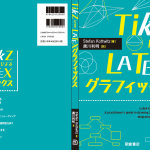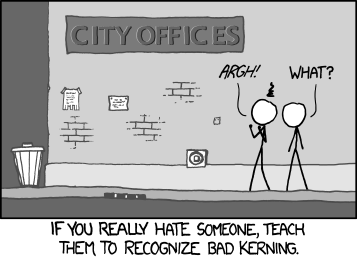The 46th general meeting of the German language TeX users group DANTE e.V. (DANTE 2012) was held in Leipzig , from March 7 until March 9. It was hosted by the HTWK Leipzig, the Leipzig University of Applied Sciences, and supported by le-tex publishing services.
Luckily I did not need to fly and neither to book a hotel room. I just rent a car, for traveling from Hamburg to Leipzig and back. Overnight I stayed in my grandmother’s house, in a village near Leipzig.
On Tuesday, March 6, I got the rental car. I took a small one, a FIAT Punto Evo, small and economical regarding fuel. Each day I took the train from Eilenburg to Leipzig, the ticket included tram fare in Leipzig and was just about 1 euro more than the tram ticket. So it’s better than taking the car to the town.
The conference venue
The meeting was held at the Lipsius building of the HTWK, just 15 minutes away from the main train station, if you take the tram. We got two seminar rooms in the second floor. One room was for the talks, with a video projector, the other room was usually frequented during breaks where we had coffee and some fruits and sweets.
The HTWK and le-tex provided WiFi for us during all days.
The attendees
Since it’s been a meeting of DANTE, nearly all attendees were members of DANTE e.V.. I’m also a member. There were quite a few attendees we know from TeX.SX: Herbert Voss, Patrick Gundlach, Martin Schröder, Uwe Ziegenhagen and me. Each of us gave a talk, Herbert and Patrick made several each.
Day One
I got up at 6 am, had a coffee, left at 7 am to catch the train for arriving at 8 am in Leipzig. So I did each of the three days. The HTWK building was easy to find, so I registered at 8:30 am and from 9 pm on I could listen to the talks.
The president of DANTE e.V.,Volker RW Schaa, opened the conference. The first talks were by Günter Partosch and Axel Strübing, who spoke about requirements of tagged PDF and possible ways of achieving the goal of producing barrier-free PDF documents using TeX. Both are working for le-tex, and it’s great that they shared their expertise with us.
Afterwards Thomas Ferber showed how to use hyperref for designing PDF documents and how to benefit from the capabilities of the Portable Document Format. Then Herbert Voss showed ways to produce animations. One is just producing a lot of PDF pages and showing them in quick succession, but there are further ways, as he demonstrated, using JavaScript and LaTeX packages such as animate.
We had a break for lunch, some of us including me took their lunch at an Indian restaurant. Lunch was good, and the menu card was funny. TeX friend, have a look at this font sample from the card:
Specifically, have a look at the kerning and notice the unequal distances between the letters. Just in the case you did not care about kerning of non-TeX-users…
After lunch, Marting Schröder talked about the status of TeX and current developments. He dealt with the new engines, BibTeX and biblatex developments, and the world of fonts for use with TeX. Jean-Michel Hufflen spoke about biblatex und MlBibTeX, and after a coffee break Martin Sievers gave a tutorium about cross-referencing with LaTeX with a focus on the cleveref package.
Finally, Herbert Voss shared his experiences regarding using LaTeX in academic education with us, with a focus on Bachelor students. It was a surprise for me to learn that many of today’s students have difficulties with installing programs and using the command line, which is a bit of a barrier when starting to work with LaTeX.
Day Two
For the morning, the general meeting of DANTE e.V. had been scheduled. We had the election of the commitee, and an extensive discussion about the journal of DANTE, “Die TeXnische Komödie” (DTK). Patrick Gundlach brought forward the proposal, to provide the PDF version of the DTK much earlier than it is now. Currently, members get the printed version, and the PDF version is provided to the public for download after three years. It took a while to find a trade-off between keeping membership benefits and providing the journal to all TeX users. Most important, the DTK will remain to be a printed journal. The result of the discussion is, that the public will get access to the download version of the DTK sooner than before, if technically possible. Perhaps it will be one year between the printed version and the download version, but this still has to be evaluated.
After lunch, Thomas Ferber und Dominik Wagenführ talked about producing EPUB from LaTeX sources. Dominik Wagenführ is the responsible editor of the journal “freies magazin“, a monthly journal dealing with free software, Open Source and Linux. He explained the way how they produce an EPUB version of the journal from the LaTeX sources. Generally, converting from PDF to EPUB seems hardly to be possible today if you would like to get good results.
Patrick Gundlach talked about database publishing with LuaTeX, automated production of documents from database content. He explained a solution using the “speedata Publisher“. This software is based on LuaTeX, and it is available both as Open Source and under a commercial license.
Herbert Voß made his second presentation, it was about OpenType and TrueType fonts for text and math with XeTeX and LuaTeX. Finally, Christof Meigen explained how to use Lua libraries in TeX documents. For example, he showed a simple and quick way using LuaTeX and wxLua for adding a graphical user interface to documents, with free text areas, choice boxes, and more. Depending on the interactive input, a PDF document would be created. Further examples are luasql for querying databases and lua-curl for accessing web services.
The attendees met for dinner at the evening in the “Pilot” restaurant. I could not be there, as I had to catch the train back.
Day Three
The last day begun with the second talk of Patrick Gundlach. He spoke about programming with LuaTeX. Specifically, Patrick showed how to program LuaTeX on node list level, what nodes are and how to manipulate node lists. During this, he introduced the new package lua-visual-debug.
Then I made a presentation about TeX online communities, such as discussion groups, mailing lists and web forums. I introduced the TeX Stack Exchange site, and I showed some of its key features which make it a very good choice for developing and sharing TeX content and for building a TeX knowledge base. This talk was similar to the one I gave at the TUG 2011 in Kerala, India, just in German for the German speaking TeX users. The English version can be found here: Bringing together TeX users online.
Uwe Ziegenhagen made the next talk about designing and producing letter envelopes and photo books with LaTeX with pdfLaTeX and ocgtools. Philipp Poll reported about the progress of the Libertine Open Fonts project, specifically about the development of a monospaced font version.
Finally, Martin Kraetke talked about the role of TeX in the le-tex company. le-tex also offered a tour through the company later, and there was a tour visiting the Museum of the Printing Arts Leipzig on Friday afternoon.
As on the previous days, there was an evening meeting. I just could not attend the evening chats.
On Saturday, I went home to Hamburg. This was a very interesting meeting, where we could listen to insightful talks, and it was a great opportunity to meet TeX users who I did not know yet in person.
Thanks to DANTE e.V., le-tex and the HTWK for the great organization.




